New Finds
“Opal Glo” buttons lasted a full decade as a G.Herring/Beutron trade name. In truth, the same type of plastic buttons were sold by G. Herring from 1948 (called Irridel) and into the 1970s, possibly later. It is possible that cheaper plastics replaced the casein formula originally used: definitely there were more polyester and nylon buttons being sold by the company from around 1958. The older buttons have a richer, deeper colour and glow.
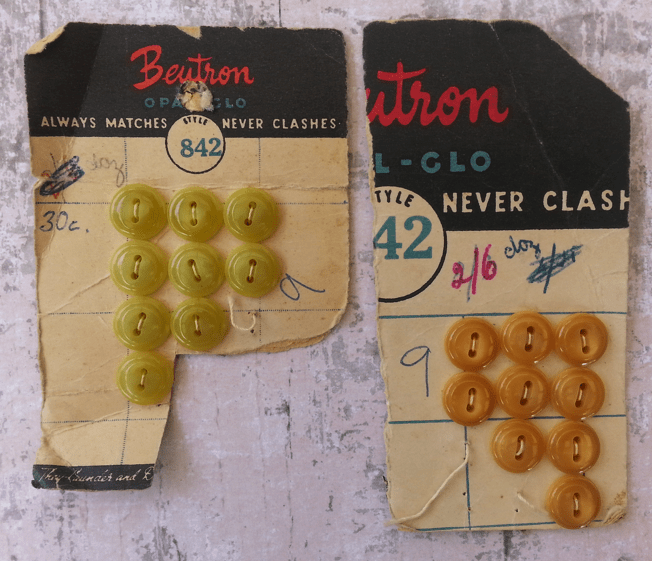
These date from 1949 possibly until 1954 (by the date of newsprint pasted onto the back of the cards). One card has a decimal price sticker applied to it, so I guess they were still selling them as old stock, and prepared to cut even the smaller card into portions by 1967! It must have been a real nuisance for the sales staff, and wasteful. The artwork was the same on both large and small cards. As they were cut into portions for the customer, the price per dozen or half-dozen was often hand written, sometimes multiple times, on the card.
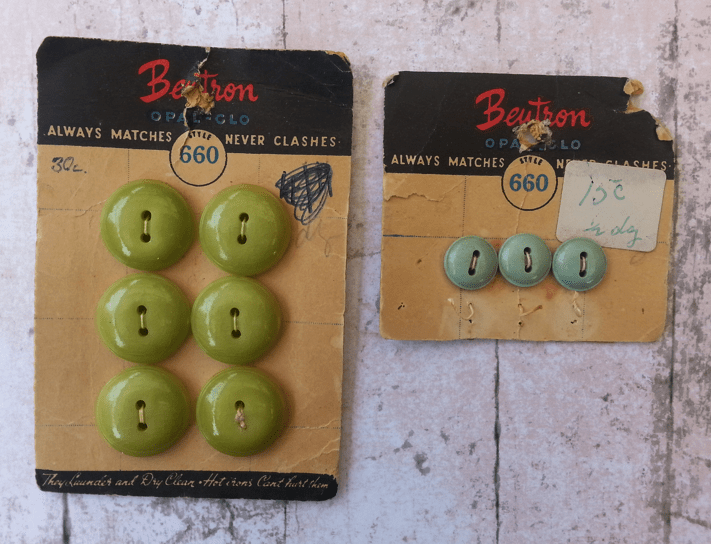
I can’t image larger stores would hold onto old stock for so many years (from before 1954 until after 1966 when imperial pricing was done with). Perhaps smaller haberdashery stores weren’t through with their stock turnover?
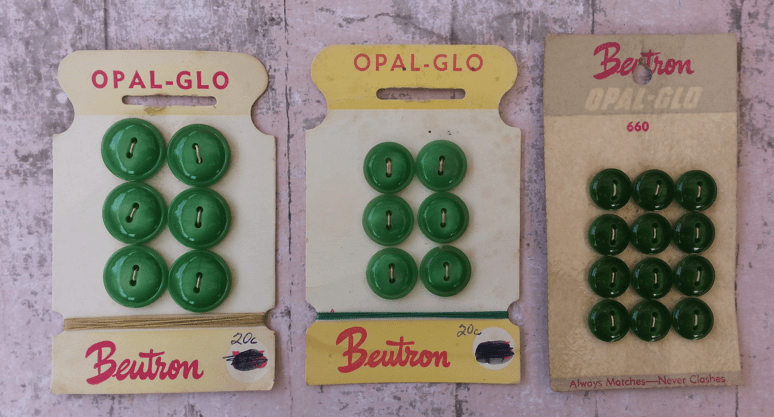
The card without the cotton thread dates from around 1958. “Tecpearl” buttons, first advertised in that year, appear on these type of cards. The other two date from around 1964. After that, the name ‘Opal-Glo’ is no longer used, even though identical buttons still appeared on Beutron cards.
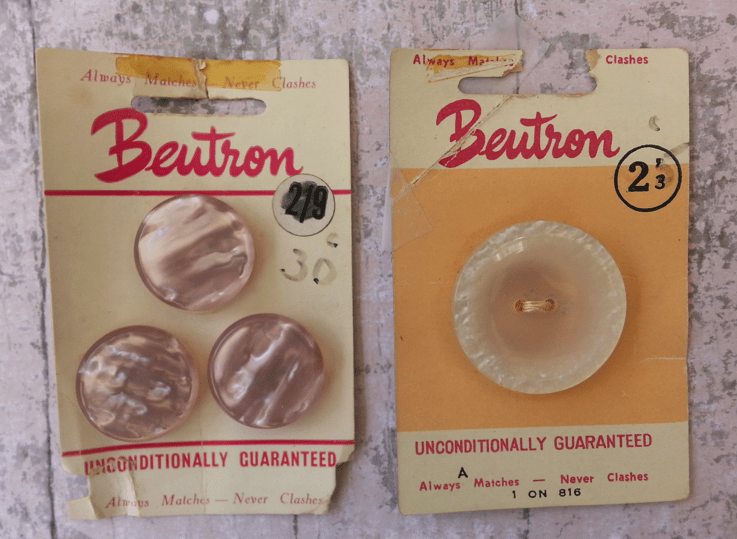
These buttons are probably made of polyester, and date from the early 1960s.
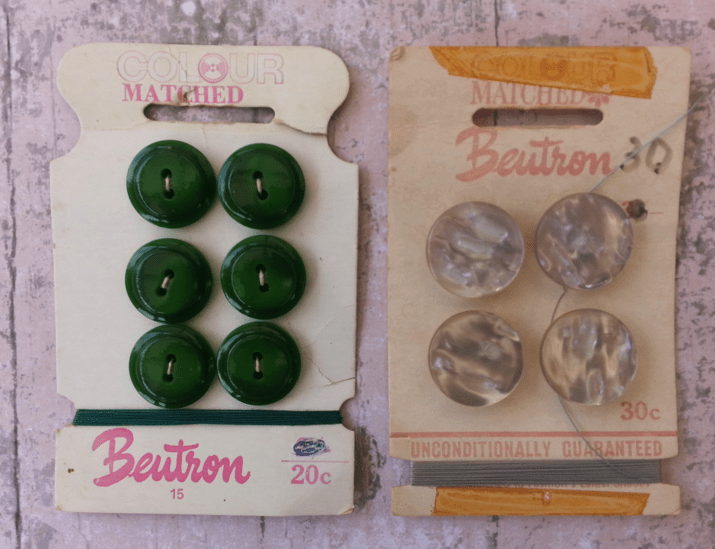
The term “Colour Matched” was used in marketing from 1963-1971. However, it was only printed on cards from 1963-7 so along with the pricing (which showed dual prices in 1966-7 and decimal only from late 1967) you can date these fairly closely.
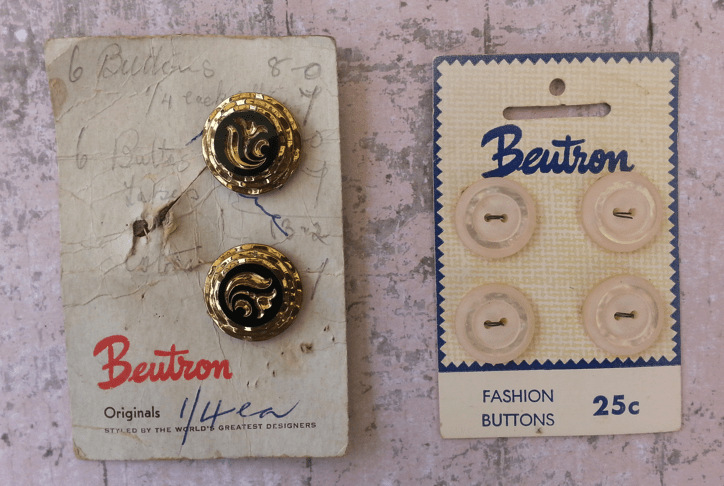
‘Originals” were advertised from 1950-1955. The glass examples were imported from West Germany. After 1955 I guess glass fell out of favour due to competition with more easily washed plastic buttons. The card on the right probably dates dates from the early 1970s.
For all comments and queries, please use the Contact page.
